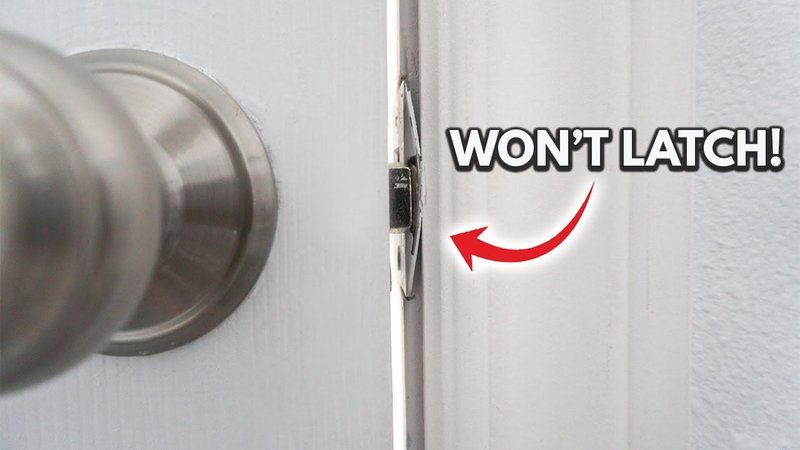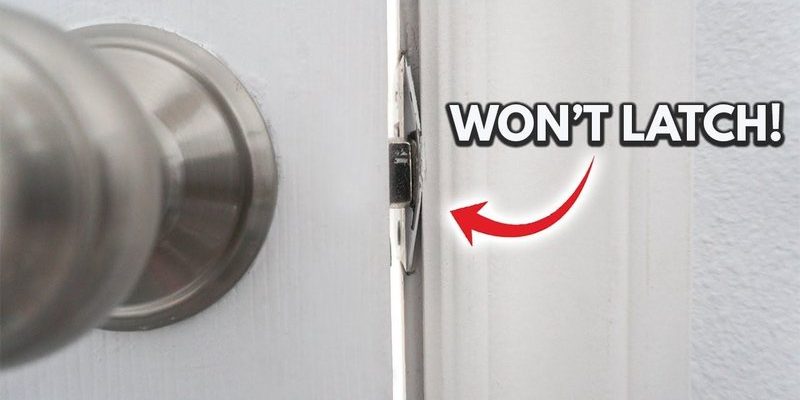
This issue can arise for many reasons, from simple alignment problems to more complex mechanisms at play. Think of doors like puzzles: every piece needs to fit just right for the picture to come together. Whether you have a classic hinged door or a more modern sliding one, knowing how to troubleshoot the issue can save you a lot of headache. Let’s dive into the common problems and solutions that can help you tackle your door’s stubbornness, helping it stay closed even when the wind tries to take it for a spin.
Understanding Why Your Door Doesn’t Latch
The first step in troubleshooting a door that doesn’t latch in the wind is to really understand why it’s happening. Doors are usually designed with simple mechanisms that allow them to close securely. However, various factors can disrupt this mechanism.
For starters, misalignment is often the culprit. If your door isn’t lined up properly with the frame, the latch won’t catch as it should. Picture a key trying to fit into a lock that’s slightly off; it just won’t work. Maybe your house has settled a bit over time, or maybe the door itself has warped due to humidity. Whatever the cause, a quick visual inspection can often reveal if your door is sitting unevenly.
Another common issue is wear and tear on the components. The latch mechanism might be worn out or rusty, making it difficult for your door to shut properly. Check if the latch moves freely or if it feels sticky. If it’s the latter, you might just need to lubricate it to regain its functionality.
Is Your Door Properly Aligned?
So, how can you tell if your door is properly aligned? Start by checking the gaps around the door. When the door is closed, there should be even gaps between the door and the frame. If one side has a larger gap, that could indicate misalignment.
To fix this, you can adjust the hinges. Open the door and look at the hinges closely. Are they tight or loose? If they’re loose, a simple tighten with a screwdriver might do the trick. If the door is still misaligned after tightening, you might need to realign the hinges by adding washers or adjusting the screw positions.
Here’s a tip: when adjusting, make adjustments gradually. It’s easy to overdo it and create more problems. After each adjustment, close the door to check if it latches properly before making more changes.
Inspecting the Latch Mechanism
Next up, let’s delve into the latch mechanism itself. Sometimes, the issue lies within the mechanism that actually does the latching. Begin by inspecting the latch. Is it moving freely when you turn the doorknob? If it feels stiff or stuck, it might need some cleaning and lubrication.
To do this, you can use a silicone-based lubricant or even a little WD-40. Just apply a small amount to the latch mechanism and operate the doorknob a few times to work it in. This can help loosen any rust or debris that might be causing sticking or jamming.
If the latch is still not functioning after lubrication, it may be time for replacement. Most latches can be replaced with just a few screws. Make sure to take note of the size and type of latch you have before heading to the store, ensuring you get the right one for a smooth fix.
Checking for Obstructions
Sometimes the simplest solution is just clearing out any obstructions around the door. Check the door frame and the surrounding area. We might not think about it, but things like dirt, debris, or even a shift in the floor can affect how the door closes.
Look for objects that might be blocking the door from closing fully. Sometimes, rain or wind can push leaves or twigs into the doorway area, preventing a solid closure. Similarly, a build-up of dirt and grime can create a barrier. Gently clean around the area and try closing the door again.
Additionally, if your door closes against a rug or a mat, it might be creating an extra obstruction. Consider whether repositioning these items could help your door latch better.
Consider Weather Stripping and Door Stops
Another factor to consider in door latching issues is the weather stripping. This material is designed to help keep out drafts and moisture, but if it’s worn or damaged, it can interfere with the door’s ability to close fully.
Inspect the weather stripping around the door. If you notice it’s flattened or has pieces missing, it might be time to replace it. Most home improvement stores carry different types of weather stripping that can be easily installed. Just slide it into place and see if that resolves your latching issue.
Door stops can also play a role. Sometimes the stop itself can be misaligned or damaged, which can prevent the door from shutting correctly. Check for any visible damage and replace it if necessary.
Using a Professional Approach
If you’ve tried everything and your door still won’t latch in the wind, it may be time to consult a professional. Sometimes doors can have deeper issues that require a trained eye. An experienced carpenter or handyman can assess the situation, diagnose the problem accurately, and recommend the best fix.
Don’t be afraid to ask for help! A professional can save you time and frustration, especially if you’re dealing with more complex door mechanisms. Plus, they can offer insights into preventative measures to avoid similar issues down the line.
Troubleshooting a door that doesn’t latch in the wind can seem like a hassle, but by following these steps, you can often find a solution without too much trouble. Remember to check for alignment, inspect the latch mechanism, and clear any obstructions. If all else fails, don’t hesitate to reach out for professional help. After all, a properly closing door doesn’t just add security; it also enhances the overall comfort of your home. With a little patience and effort, you can ensure your door stays firmly in place, no matter how strong the wind blows.
